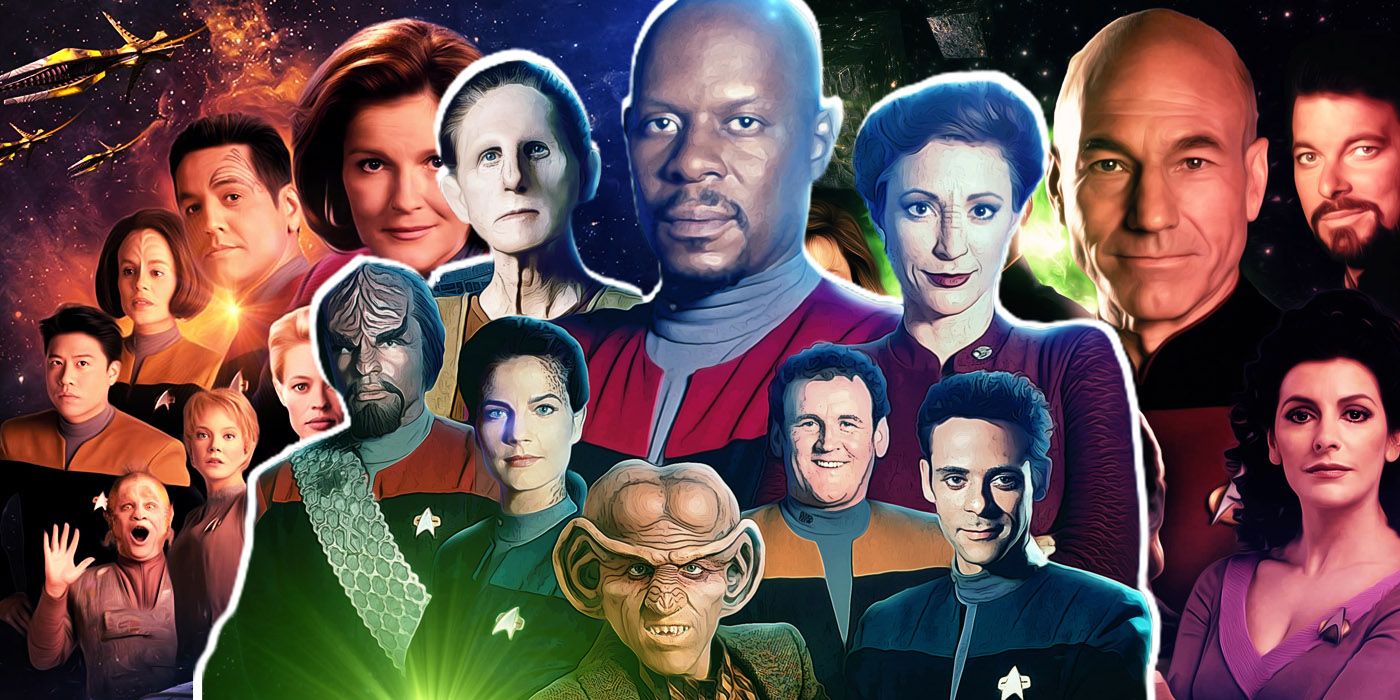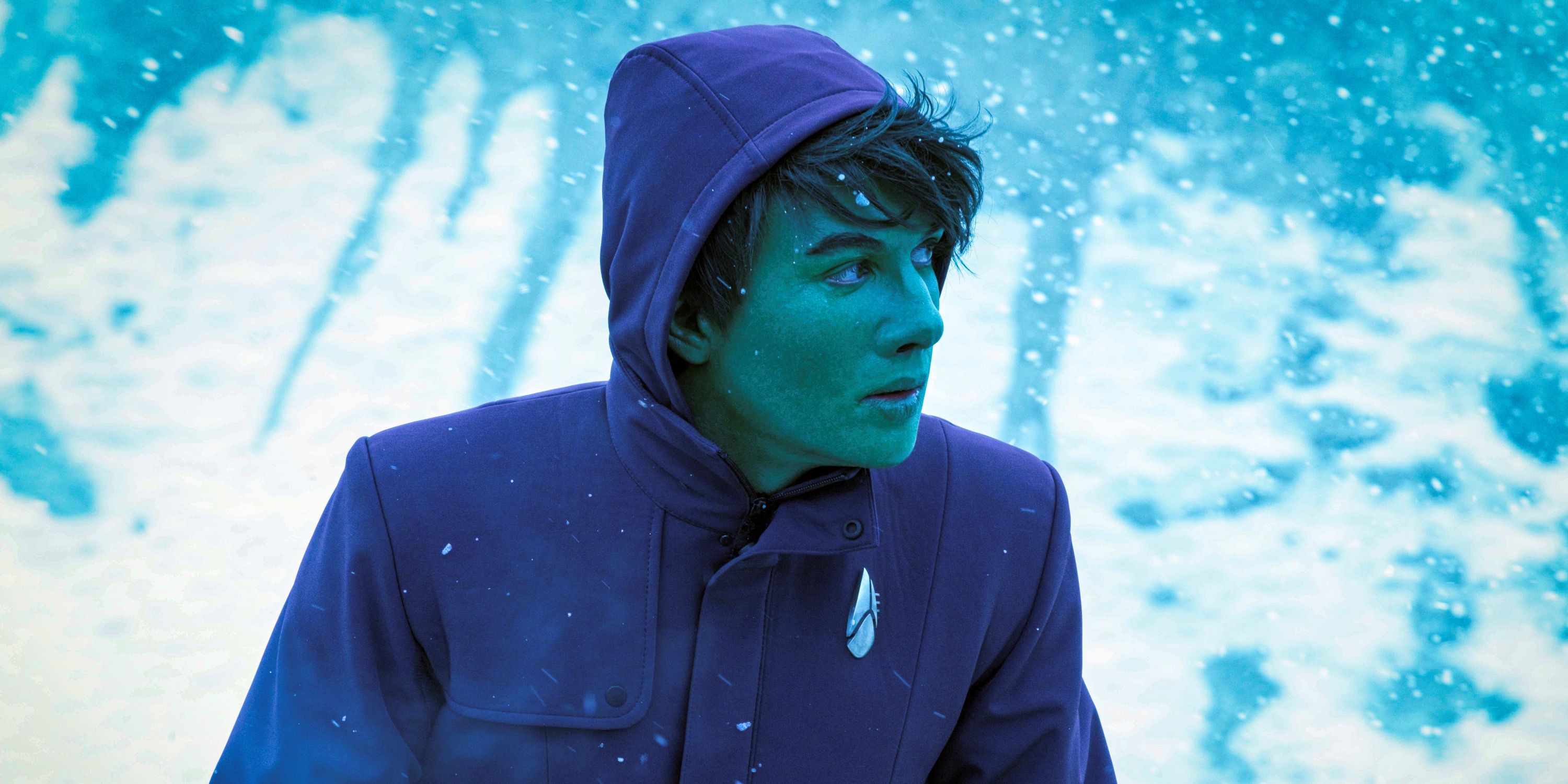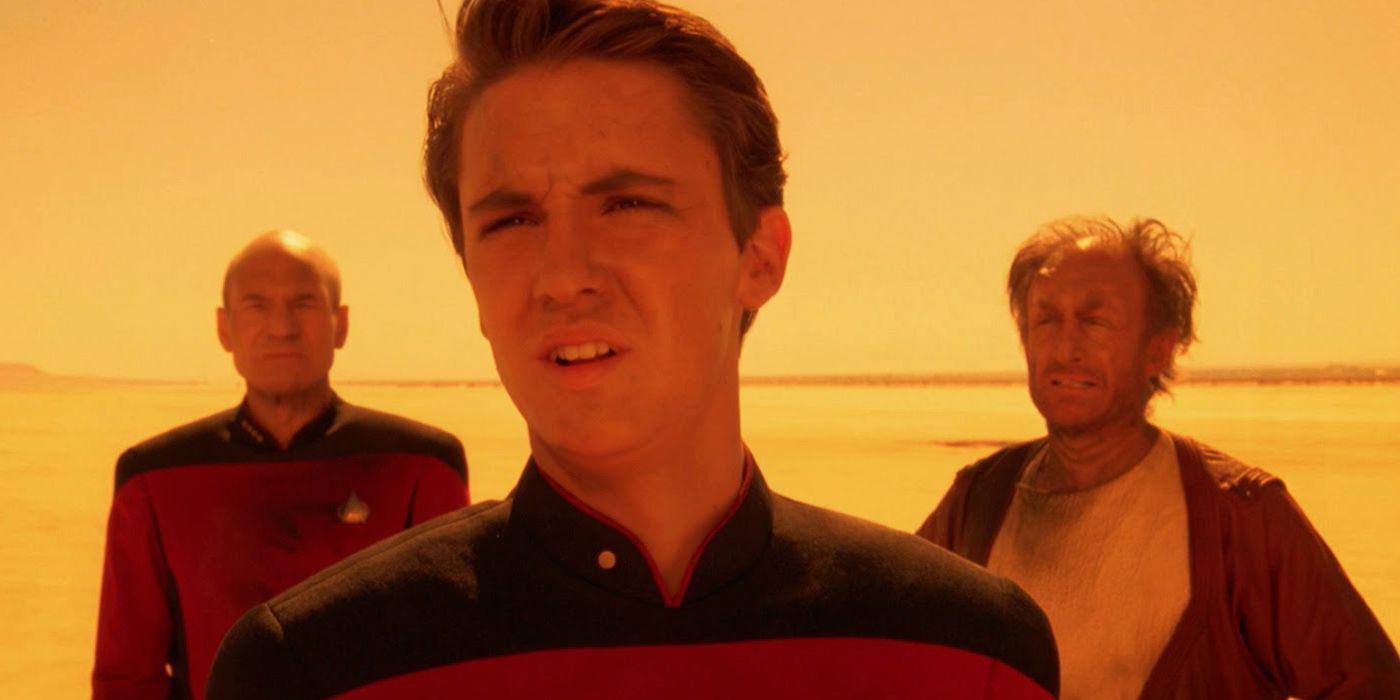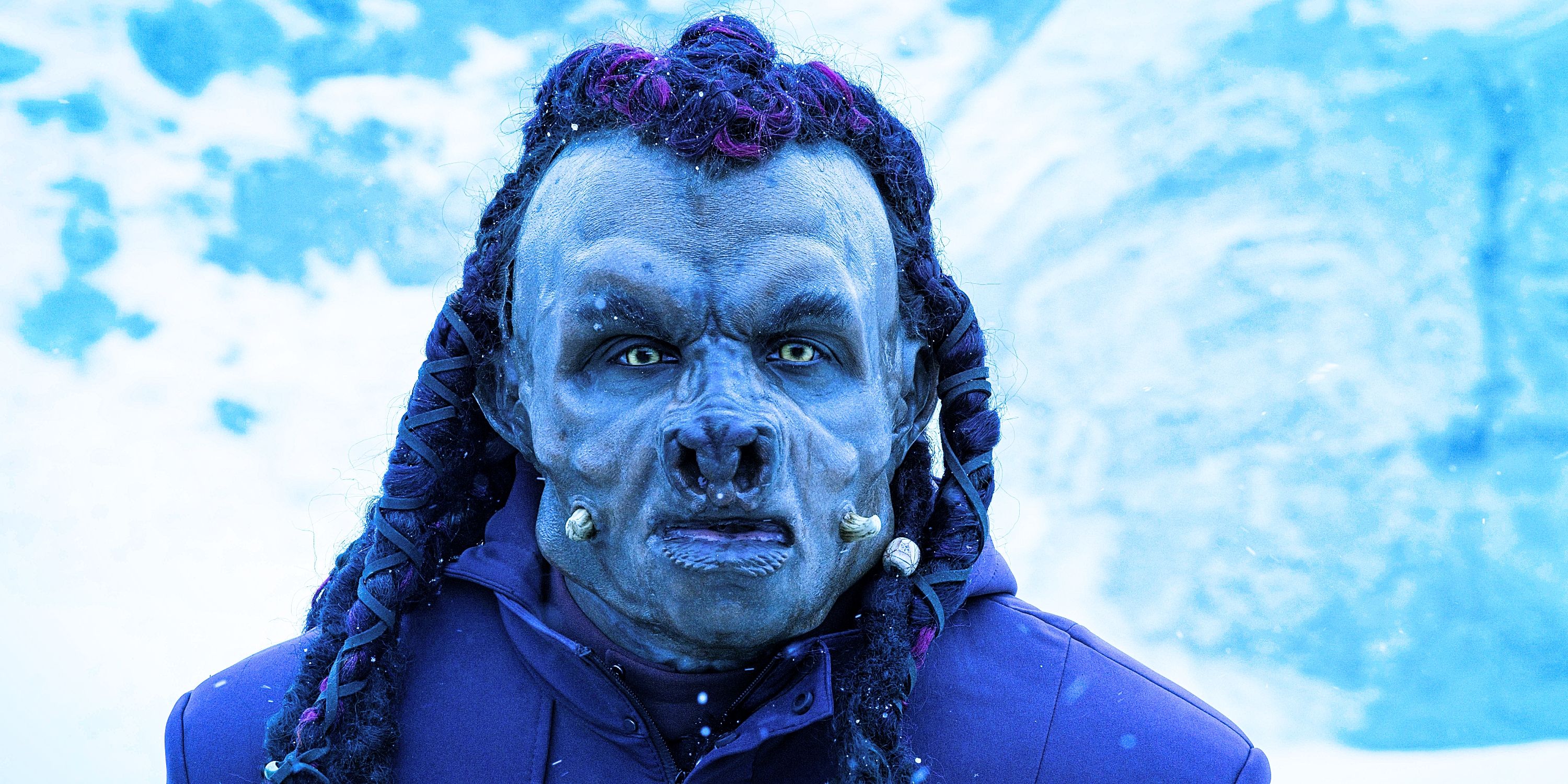
From its inception, the original series has incorporated a hierarchical structure reminiscent of the military for its characters, even though Starfleet is primarily focused on exploration and diplomacy. Despite being a generally peaceful organization, encounters can turn perilous in the unexplored regions of space. A clear command structure becomes crucial during such times to maintain maximum efficiency. This arrangement seems paradoxical given that Starfleet officers often embody rugged individualism, but over time, ranks have become an integral aspect of the series, significantly contributing to its longevity.
A character’s rank in Star Trek not only indicates their seniority, ship position, and interactions with fellow crew members but also signifies the level of authority they possess within Starfleet. Over time, these rank insignia have changed significantly, ranging from the lowest-ranking cadets to the highest-ranking admirals. Each character’s rank comes with a predefined set of duties and expectations.
As Such, They Are Typically Young and Hold No Power




In the typical scenario, cadets are placed aboard a starship for training, where they serve without any rank and are expected to follow the commands of any crew member. They’re often equipped with temporary badges or communicators and are overseen by a supervising officer. In the 23rd century, these trainees wear badges with a black background as a sign of their status, while in the 24th century, they can be identified by their unique uniforms.
In “Star Trek II: The Wrath of Khan,” the starship Enterprise is utilized for training purposes, with its crew primarily composed of trainees or cadets. Later on, in “Star Trek: The Next Generation” Season 4, Episode 9, titled “Final Mission,” Wesley Crusher officially enrolls at Starfleet Academy. For the majority of his subsequent appearances, he serves as a cadet. Likewise, Nyota Uhura and Sylvia Tilly join the Enterprise crew as cadets in “Star Trek: Strange New Worlds” and “Star Trek: Discovery,” respectively.
They Help Keep the Ship Running by Doing the Repetitive, Small Tasks
During their time at Starfleet Academy, officers are trained, while regular personnel undergo a 24th-century version of basic training. These individuals form the unnamed crew that work behind the scenes, diligently carrying out the multitude of small tasks necessary to keep a starship operational. Their roles range from enlisted crew members to petty officers, who often take on supervisory duties, much like sergeants do in other contexts. Unlike their superior officers, they typically don’t display any insignia on their uniforms; however, chief petty officers during the era of “The Next Generation” sometimes have a black pip or similar marking.
As a member of the enlisted crew, I often find myself in the role portrayed by the red-shirted characters from “The Original Series,” who unfortunately meet their end to further the plot. However, it’s not frequently shown how our work is vital to keeping Starfleet functioning smoothly. Without us lower-ranked personnel, many essential ship functions would suffer greatly. It’s also important to note that there’s a hierarchy among us, with some of us holding positions of authority over others.
Crewman Is Reserved for the Lowest-Ranked Enlisted Members
In the vast universe of Star Trek, numerous unforgettable characters captivate our hearts and minds. This could be due to their unique personalities or the immense affection they inspire. Amidst these iconic figures, there are countless hardworking individuals who carry out the everyday tasks that keep Starfleet functioning smoothly. Though characters may sometimes casually refer to these workers as crewmen, it’s also a specific rank within the Starfleet hierarchy. These crewmen are often not easily identified by visible or standardized insignias.
Among some key characters holding the position of Crewmember, we find Michael Burnham from the first season of Star Trek: Discovery, and Christine Chapel in Star Trek: Strange New Worlds. Although these individuals eventually advanced in their careers, others like Elizabeth Cutler in Star Trek: Enterprise are only shown in the role of a Crewmember. Regardless of advancement, it’s clear that those with this rank play a crucial role, despite having fewer responsibilities assigned to them.
The Midshipman Rank Is Bestowed on Soon-to-be Starfleet Academy Graduates
Starfleet Academy trainees who aspire to become Commissioned Officers hold the title of Midshipman. This rank has two tiers: Midshipman and Midshipman First Class. Although there’s a minor distinction, individuals holding the Midshipman First Class rank are usually in their final year at the academy, whereas those with the regular Midshipman rank are just starting their academic journey.
Among those holding the Midshipman rank, Peter Preston stands out as the most prominent. He is Montgomery Scott’s nephew and served in an engineering role during “Star Trek II: The Wrath of Khan.” Additionally, there are references to Captain Kirk’s time as a Midshipman in “Star Trek: The Original Series,” where he encountered Lieutenant Benjamin Finney. Although Midshipmen initially possess limited authority, their primary role is to learn and prepare for taking on greater responsibilities in the future.
Petty Officers Guide Junior Personnel In Their Tasks
In many cases, Petty Officers attain their position due to their outstanding proficiency and leadership skills in specific domains. They then assume a formal role as leaders, directing smaller teams of enlisted personnel in accomplishing their tasks. While Yeomen (administrative assistants) and Specialists (who specialize in areas like engineering, science, or security) often hold the rank of Petty Officer, this is not always the case.
In the Star Trek universe, there aren’t many Petty Officers who stand out, but Samno from Star Trek IV: Undiscovered Country is one of the exceptions. Unlike them, Yeomen are mentioned more often, such as Yeoman Burke in the same film, and characters like J.M. Colt and Janice Rand in Star Trek: The Original Series, who have slightly larger roles. Generally, however, Petty Officers tend to stay out of the spotlight during Starfleet operations.
Chief Petty Officers Bridge the Gap Between Enlisted Personnel and Commissioned Officers
As a dedicated fan, I can’t help but appreciate how Star Trek: The Next Generation introduced the character of Miles O’Brien, who managed the Enterprise-D transporters and later ascended to the role of Chief of Operations on Star Trek: Deep Space Nine. In his capacity as a Chief Petty Officer, Miles, along with others holding the same rank, served as esteemed guides for ensigns and junior enlisted crew members. Their extensive experience in operating Starfleet’s ships made them invaluable mentors.
Even though Chief Petty Officers were usually found in engineering or technical roles, they were also observed helping new recruits in various areas of knowledge. Apart from Miles O’Brien, prominent examples of Chief Petty Officers include Garrison from the initial episode of Star Trek: The Original Series and Janice Rand, who had risen through the ranks by the time she appeared in Star Trek IV: The Voyage Home.
As Such, They Typically Do Menial Work
In Starfleet ships, Ensigns represent the most junior rank of officers. Upon graduation from Starfleet Academy, cadets are typically promoted to the rank of Ensign. Despite technically having command authority, they’re usually assigned tasks of lesser importance, not receiving much attention from senior officers. Similar to Non-Commissioned Officers (NCOs), Ensigns in the era of “The Original Series” did not display any insignia on their uniforms. However, with “The Next Generation” and subsequent series, Ensigns started wearing a single gold pip on their collars. Often, they are grouped together with the characters who wear red shirts.
Harry Kim is often recognized as either the franchise’s most admired or criticized ensign, not once receiving a promotion across Star Trek: Voyager’s seven seasons, even while serving with honor on the Bridge. In contrast, Pavel Chekov from The Original Series starts off as an ensign and progresses more swiftly. Interestingly, all four main characters in Star Trek: Lower Decks initially hold the rank of ensign; however, they are promoted to lieutenant (junior grade) at the start of Season 4.
Medical Personnel Are Typically Given This Rank Due to Their Intensive Studies
When medical personnel complete their training, they are often promoted to the rank of lieutenant, junior grade. This rank signifies that they have undergone more extensive training compared to ensigns, but they still need further experience before assuming higher command roles. In the original series, this rank is represented by a single line on the uniform sleeves, while in Strange New Worlds, it’s been changed to a continuous colored bar. The Next Generation and subsequent series denote this rank with an additional black pip along with the ensign’s colorful pip.
In the beginning of their service on Deep Space 9, both Julian Bashir and Ezri Dax hold the position of Lieutenant Junior Grade. However, Ezri is given this rank as a field promotion during Season 7’s episode titled “Afterimage.” Similarly, Geordi La Forge and Mr. Worf start off as Lieutenants Junior Grade, just like B’Elanna Torres who receives her rank on a temporary basis upon joining the crew of Voyager. The characters from Lower Decks are all promoted to Lieutenant Junior Grade in Season 4, Episode 1, titled “Twovix.
Additionally, Lieutenants Can be Department Heads or Part of the Bridge Crew
Lieutenants have reached a stage where they handle significant tasks. They might direct small units or oversee critical facilities, and they are frequently found among the bridge team or even as department heads. In “The Original Series,” they were denoted by a solitary bar on their uniform sleeve, while “Strange New Worlds” added an additional, thinner bar above the lieutenant junior grade’s insignia. “The Next Generation” and subsequent series used two colored symbols on the collar to represent them.
In the later seasons of Star Trek: The Next Generation, Worf holds the rank of lieutenant, which is later upgraded to lieutenant commander in the movie Star Trek: Generations. On the other hand, Ro Laren gets promoted to lieutenant just before she defects to the Maquis in Season 7, Episode 24, “Preemptive Strike.” The position of a lieutenant is significant, as it often involves manning the helm. Notable characters who have held this rank include Hikaru Sulu from The Original Series, Keyla Detmer in Star Trek: Discovery, and Erica Ortegas in Star Trek: Strange New Worlds.
They Sometimes Assume the Responsibilities of a Captain on Smaller Ships, Too
On a starship, Lieutenant Commanders hold significant roles that can range from acting as second-in-command or even captains on smaller vessels, while on larger ships they might head specialized departments like science and engineering. In the original series, their rank is identified by two stripes – one thick, one dashed – but in ‘Strange New Worlds’, this changes to two solid colored bands. The next series, ‘The Next Generation’ and its successors denote Lieutenant Commanders with two colored symbols and one black one.
In the various Star Trek series, the character Montgomery Scott served as Lieutenant Commander during The Original Series, where he led as Chief Engineer and occasionally commanded the Enterprise when Captain Kirk and Mr. Spock were on missions. Likewise, Geordi La Forge rose to the rank of lieutenant commander in The Next Generation, alongside Data and Deanna Troi, although she eventually progressed to the rank of Commander. In Star Trek: Deep Space Nine, both Worf and Jadzia Dax held the rank of Lieutenant Commander when they started their romance. Lastly, Una Chin-Riley, from Star Trek: Strange New Worlds, holds the rank of lieutenant commander as well.
Occasionally, Commanders Are in Charge of Smaller Ships or Space Stations
Onboard a ship, Commanders are typically known as the “Number Ones,” who work closely with the captain and carry out many of the same duties. If the captain is unable to perform their role, Commanders are prepared to take charge. They’re often seen as future captains, destined to command their own vessel someday. In certain situations, Commanders act as the top authority on smaller ships or space stations. Notably, chief medical officers can also hold this position. On Star Trek: The Next Generation and later series, they are identified by two broad stripes on their sleeves and three colored insignia on their collar.
During the storyline of Star Trek: The Original Series, Mr. Spock holds the position of both commander and chief science officer. Subsequent series have featured characters like William Riker from The Next Generation and Seven of Nine in Star Trek: Picard who followed in his footsteps. Additionally, characters such as Beverly Crusher, Leonard McCoy, Deanna Troi (who is promoted to commander in Season 7, Episode 16, “Thine Own Self”), and Ben Sisko (who starts off as a commander on Deep Space 9 before being promoted to full captain by the end of Season 3) also hold or have held the rank of commander.
They Have Equal Parts Autonomy and Responsibility Due to Their Position
In this role, the captain functions as the leader of a spaceship, with all crew members positioned below them in rank. This position grants them significant freedom, but also a heavy burden of accountability. Spacecraft frequently encounter perils far out in the cosmos, and it’s the captain who must decide on the crucial actions when lives are at risk. Sometimes, captains may be engaged in other tasks, such as commanding a space station or holding a managerial role on Earth. In the original series, captains were identified by three stripes on their sleeves – two thick, one dashed. The latest series, Strange New Worlds, slightly modifies this to a single thin band sandwiched between two thicker ones. The Next Generation era uses four full dots on the collar instead.
The majority of “Star Trek” series feature a captain as the primary character, beginning with James T. Kirk on the original show. This group also includes Jean-Luc Picard, Kathryn Janeway, Christopher Pike, and Carol Freeman. Interestingly, many lower-ranking characters eventually ascend to the position of captain, such as Will Riker, Tuvok, and Mr. Spock. Notably, Ben Sisko and Michael Burnham were both promoted to captain after several seasons of working their way up, which is different from most “Star Trek” series where captains are usually already in place at the start.
Or, They Might Oversee a Large-Scale Installation Project
Although they hold the most junior flag officer rank, Commodores carry a significant burden of responsibilities. Their duties can vary widely, ranging from commanding a fleet of vessels to supervising specific projects. Unlike Admirals, who often focus more on strategy and administration, Commodores are typically still active service members. This means they have the opportunity to experience more hands-on action than an Admiral might. Additionally, due to their higher rank, Commodores are occasionally tasked with overseeing captains.
Though it’s acknowledged that Commodore Oh remains loyal to the Zhat Vash, there can be no argument that she is one of the most recognized Commodores in “Star Trek.” In fact, she held the position of Director of Starfleet Security at one point. On the other hand, when it comes to an honest Commodore, you have Commodore Geordi La Forge. He rose through the ranks from lieutenant, junior grade, and as a Commodore, Geordi served as the head curator for the Starfleet Museum.
They Advise Admirals on the Best Course of Action
In essence, the title of Vice Admiral signifies a position that sits just below an Admiral. Despite this hierarchy, they are empowered to control entire armadas of starships or occupy influential roles in leadership and governance within Starfleet. Their decisions have far-reaching impacts on the organization as a whole. It’s crucial to remember that Vice Admirals aren’t the same as Admirals; sometimes, they may even be referred to colloquially as “Admirals”. Historically, Vice Admirals were identified by a triangular rank insignia with two pips beneath it, but over time, their insignia was modified into a rectangular golden border containing three pips.
In the realm of Star Trek, Katrina Cornwell from Discovery, Maxwell Forrest from Enterprise, and William Ross from Deep Space Nine are notable Vice Admirals within the franchise. Interestingly, Kathyrn Janeway rose through the ranks from captain to Vice Admiral during the span between Voyager and Nemesis. It’s worth noting that some Admirals may revert to the rank of Vice Admiral if necessary, even though it is considered a step down in the hierarchy.
Read More
- Clash Royale Best Boss Bandit Champion decks
- Chuck Mangione, Grammy-winning jazz superstar and composer, dies at 84
- Clash Royale Furnace Evolution best decks guide
- Riot Games announces End of Year Charity Voting campaign
- Mobile Legends November 2025 Leaks: Upcoming new heroes, skins, events and more
- Clash Royale Witch Evolution best decks guide
- Deneme Bonusu Veren Siteler – En Gvenilir Bahis Siteleri 2025.4338
- King Pro League (KPL) 2025 makes new Guinness World Record during the Grand Finals
- Clash Royale Season 77 “When Hogs Fly” November 2025 Update and Balance Changes
- Tourism Malaysia Eyes Esports Boom: Director General Highlights MLBB M6 World Championship and Future Opportunities
2025-05-15 01:53